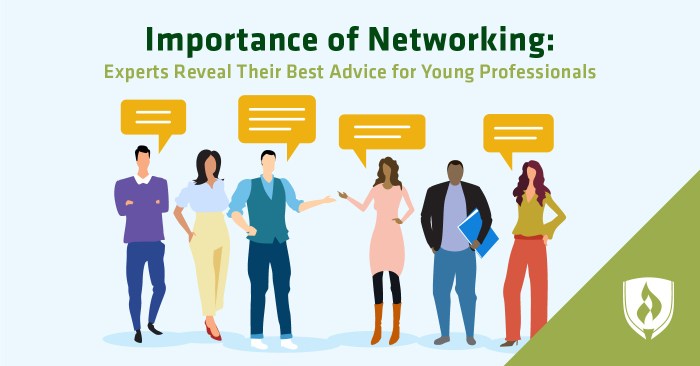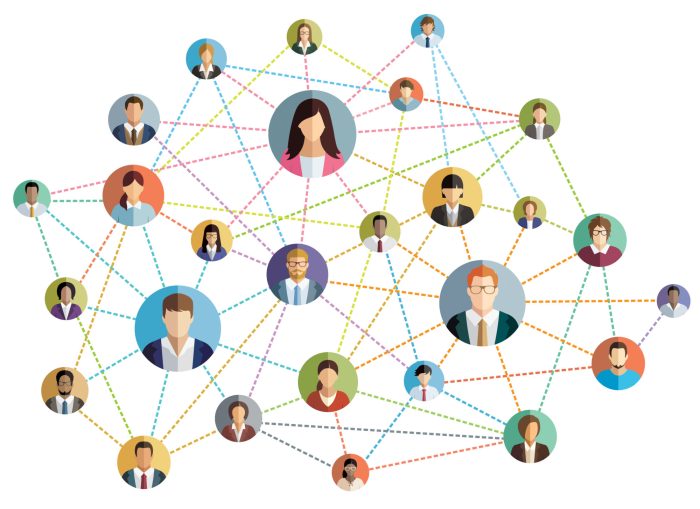How to network with people you don’t know – In the realm of networking, navigating the uncharted waters of meeting and connecting with people you don’t know can be a daunting task. However, with the right strategies and a dash of confidence, you can turn these encounters into opportunities for growth and success.
This comprehensive guide will equip you with the essential tools to break the ice, build rapport, and forge lasting connections with strangers. Whether you’re attending a conference, joining an online community, or simply striking up a conversation at a coffee shop, these techniques will empower you to expand your network and unlock new possibilities.
Icebreakers for Starting Conversations
Breaking the ice is crucial for successful networking. It sets the tone for the conversation and helps establish rapport. Icebreakers are conversation starters that can be used to initiate conversations with strangers in a friendly and approachable manner.
Effective icebreakers are often lighthearted, relatable, and open-ended, allowing for a natural flow of conversation. They can range from simple compliments to observations about the surroundings or shared experiences.
Using Icebreakers to Build Rapport
- Create a positive atmosphere: Icebreakers help create a comfortable and welcoming environment, making it easier to engage in meaningful conversations.
- Show interest in others: By asking questions and actively listening, you demonstrate genuine interest in the person you’re speaking with, fostering a sense of connection.
- Find common ground: Icebreakers can help you identify shared interests or experiences, providing a foundation for further discussion.
Effective Listening and Communication

Effective listening and communication are essential for building strong relationships and networking effectively. By actively listening to others and communicating clearly, you can create a positive and engaging atmosphere that encourages open dialogue and understanding.
Active Listening
Active listening involves paying full attention to what the other person is saying, both verbally and non-verbally. This means making eye contact, nodding, and asking clarifying questions to show that you are engaged and interested. It also means avoiding interrupting or changing the subject until the other person has finished speaking.
Non-Verbal Communication
Non-verbal communication includes body language, facial expressions, and eye contact. These cues can convey a lot of information about how you are feeling and what you are thinking. When you are networking, it is important to be aware of your non-verbal communication and to use it to your advantage. For example, maintaining eye contact can convey confidence and interest, while smiling can create a welcoming and approachable atmosphere.
Open-Ended Questions
Open-ended questions are questions that cannot be answered with a simple yes or no. They encourage the other person to elaborate and share more information. This can help you to get to know them better and to build rapport. Some examples of open-ended questions include:
* “Tell me about your work.”
* “What are your interests?”
* “What are your goals for the future?”
Empathetic Communication
Empathetic communication involves trying to understand the other person’s perspective and feelings. This can be difficult, especially if you do not agree with their point of view. However, by showing empathy, you can create a more positive and understanding atmosphere. Some tips for showing empathy include:
* Listening to the other person without interrupting.
* Trying to understand their point of view, even if you do not agree with it.
* Reflecting back what you have heard to show that you are understanding.
* Using “I” statements to express your own feelings.
By following these tips, you can improve your listening and communication skills and build stronger relationships with the people you meet.
Finding Common Ground and Building Connections

Identifying shared interests and experiences is crucial for establishing connections during networking. By finding common ground, you can create a foundation for building rapport and trust.
To identify shared interests, pay attention to the other person’s body language, listen actively to their conversations, and ask open-ended questions that encourage them to share information about themselves.
Building Upon Common Ground, How to network with people you don’t know
Once you’ve identified common ground, use it to build connections. Share your own experiences and perspectives, and ask follow-up questions to demonstrate your interest and engagement.
Be authentic and genuine in your interactions. People can sense when you’re being disingenuous, so it’s important to be yourself and let your personality shine through.
Following Up and Staying Connected
Networking is not just about making initial contact but also about building and maintaining relationships. Following up after the initial meeting and staying connected with new acquaintances is crucial for developing meaningful professional connections.
Staying Connected with New Acquaintances
Make a conscious effort to stay in touch with people you meet. Send a follow-up email or message within a day or two of meeting, thanking them for their time and expressing your interest in continuing the conversation. Keep the communication brief and personal, and consider sharing an article or resource that might be relevant to their interests.
Use of Social Media for Networking
Social media platforms like LinkedIn and Twitter provide excellent opportunities for networking and staying connected. Join relevant groups, follow industry influencers, and engage in discussions to expand your reach and connect with like-minded individuals. Regularly share valuable content, such as articles, blog posts, and insights, to establish yourself as a thought leader and attract potential connections.
Networking Events and Online Platforms

Networking events and online platforms provide ample opportunities to connect with individuals you may not know. These avenues offer diverse settings to foster professional growth, expand your knowledge base, and cultivate meaningful connections.
Networking Events
Common networking events include:
- Conferences: Industry-specific gatherings that offer presentations, workshops, and networking opportunities.
- Trade Shows: Events where businesses showcase their products and services, providing a platform for attendees to connect.
- Networking Receptions: Social events designed to facilitate connections and foster relationships among professionals.
li>Meetups: Informal gatherings organized around specific topics or interests, allowing participants to engage in discussions and exchange ideas.
Benefits of Networking Events:
- Expand your professional network.
- Gain industry insights and knowledge.
- Build relationships with potential clients, partners, or mentors.
- Promote your business or services.
Online Networking Platforms
Virtual networking platforms enable professionals to connect and engage from anywhere, regardless of geographical location.
Benefits of Online Networking Platforms:
- Convenience and accessibility.
- Expanded reach and global connections.
- Targeted networking opportunities based on specific interests or industries.
Pros and Cons of Different Networking Opportunities
| Type | Pros | Cons |
|---|---|---|
| Networking Events |
|
|
| Online Networking Platforms |
|
|
Ultimately, the best networking opportunities depend on your specific goals and preferences. Consider the benefits and drawbacks of each option to determine the most suitable approach for your networking endeavors.
Closing Notes: How To Network With People You Don’t Know
Remember, networking is not about collecting business cards or amassing a vast number of connections. It’s about building genuine relationships, finding common ground, and leveraging those connections to support your personal and professional goals. Embrace the art of connecting with strangers, and you’ll be amazed at the doors it opens.
Common Queries
How do I start a conversation with a stranger?
Begin with a simple icebreaker, such as commenting on the weather, the event you’re attending, or a shared interest. Active listening and asking open-ended questions will help keep the conversation flowing.
How do I build rapport with someone I don’t know?
Find common ground by exploring shared experiences, interests, or goals. Show empathy and genuine interest in the other person, and be authentic in your interactions.
What are some tips for following up after an initial meeting?
Send a brief email or LinkedIn message within 24 hours, thanking them for their time and reiterating key points discussed. Offer to connect on social media or suggest a follow-up meeting to continue the conversation.













